Did you hear the Metaverse got shelved? It’s one more product that isn’t seeing the light of day. Billions down the drain. Technically they were worked on and paid for, but legs are not really coming, are they? It’s only the spectre of legs haunting us, their imminent arrival. Legs would have always anyway been a complication.
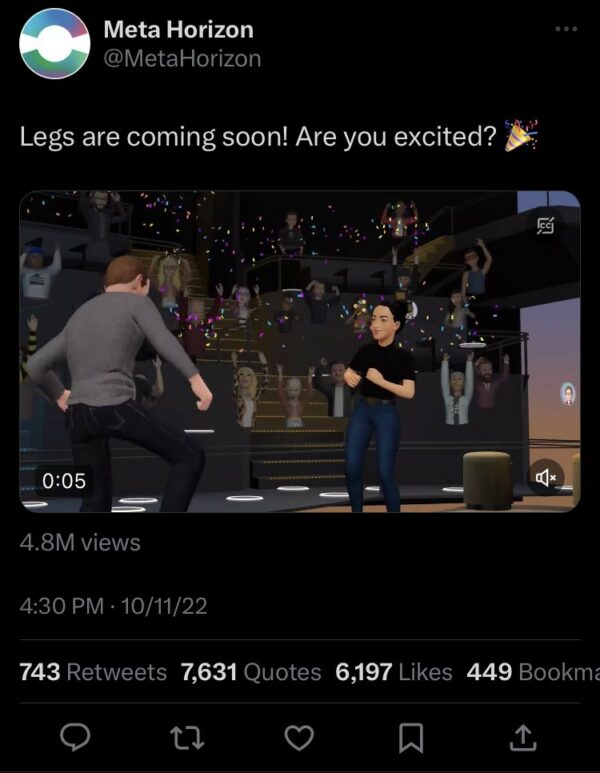
Did you hear that 1,600 car manufacturing plant workers got fired in The Netherlands? They all worked at VDL, in Limburg, and orders stopped coming in so they had to be let go. “This concerns production employees and employees of support departments.” All easy enough to automate out of a job, especially if there’s not that much demand.
Did you hear that generative AI1 might be bad for the environment? I read that headline while blocking a highway in The Hague in an attempt to stop the 30 billion in Dutch government funding that goes yearly to the fossil fuel industry. The next day I still had to go back to work. I am, for all intents and purposes, an artist. In theory, also at risk of being laid off, or shelved, or having my profession discontinued.
Did you hear that me and my colleagues ended up trying to use ChatGPT and image generators to generate the title of our art exhibition, its press release, and some variations on a poster? We were tight on budget, and nothing really connected any of our works. So, in this mini-drama, in the wee hours of the night, the idea of taking some of the publicity load off of our backs was floated—just the social media posts, some visuals, some bits which we would have appreciated to have automated anyway. It would have been harmless, really. But did you know that “those who write marketing and social media content are in the first wave of people being replaced with tools such as chatbots, which are seemingly able to produce plausible alternatives to their work”?
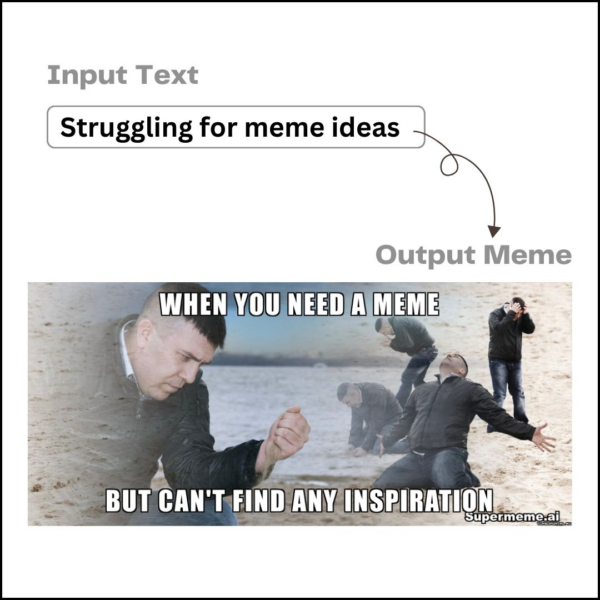
And then there’s Photoshop’s “generative fill” function, which was released right after Midjourney, DALL·E 2, and Stable Diffusion. With these tools we could create new images, or expand ours, for this simple task of having exhibition visuals. After all, it’s the art that counts, not its publicity, right?
We cycled through variations, though it would have been more honest to say that there is no single unifying theme or frame to describe the work of the artists taking part in this exhibition in 2023. The thing is, neither us nor the text and image generators could distill the core of our works. We’re disjointed, fragmented, single minded. If push comes to shove, and we have to fight our AI overlords, we’d have major issues agreeing on a strategy, so we might as well surrender. And surrender we did. The image generator spit out some variations of a tree, a human figure, ribbons, bright shades of orange and pink.
The text generator proposed titles that hinted at its state of mind, its internal workings and acceleration:
How Do We Talk To You?
Scaling time
Timescale
Getting closer
Unpolished
Rough around the edges
Circumventions
Circumvent & Reinvent
Over, Under, Through and During
Over, Under, Through and…
It’s a matter of time
Time Unbound
Threads of Time’s Expansive Scale
The Eternal Return: Exploring Time’s Expansive Scales
The Grand Illusion: Time’s Perpetual Dance of Scale
Exploring Time’s Expansive Scales
What happens when you put time on a scale?
What happens when you scale time?
The Time Between Now (and When?)
Failing On Time
None of the solutions these generative AI tools came up with were any better or worse than what we, a group of thirteen folks, could have managed to come up with. We put all options up for a vote in our group chat. We let the voice of the crowd decide.
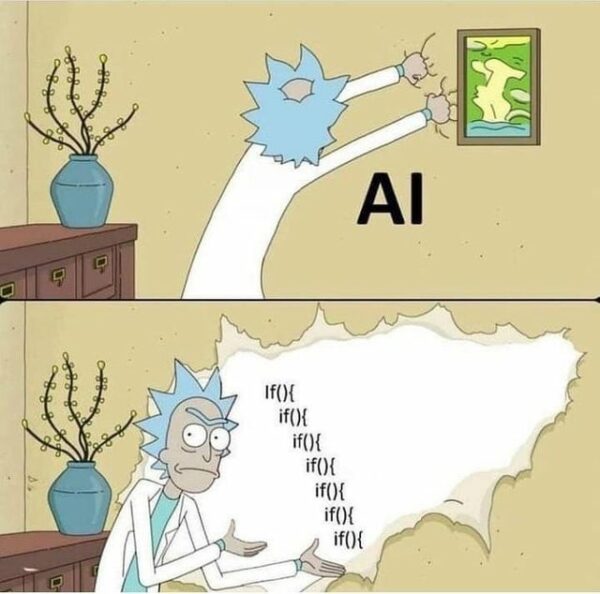
Did you hear that AI poses a danger to democracy? Well, yes, but in this preliminary stage we at the very least kept the voting element. Then again, if the danger were real, it might be that the way in which we’ve crafted democracy has major faults to begin with.
I couldn’t help but think though. First they came for the graphic designers and copywriters, and I did not speak out. Because I was not a graphic designer or a copywriter. I allowed, or rather even encouraged, these jobs to be discontinued. It was simply the affordable thing to do in the current climate of funding cuts and precarity in the cultural field.
There’s some secret pleasure to letting yourself be annihilated.
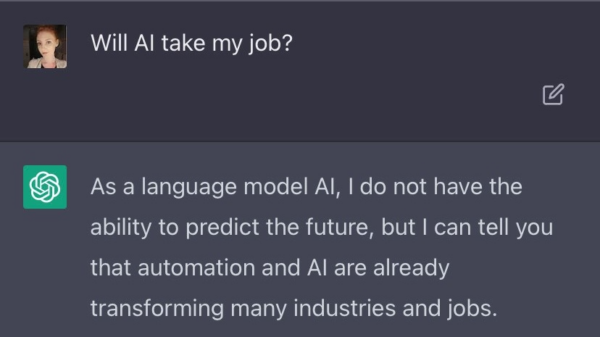
I thought to myself that rather than automate our public relations we could have been better off automating the whole exhibition and using the time we were left with to get some rest, maybe even donate our potential production budget to someone that might make better use of it. Maybe to one of those VDL workers that got laid off that could benefit from a month’s salary instead.
Did you hear that we should consider automating CEOs?
Next up we could automate education. As per “ZIZEK: that AI will be the death of learning & so on; to this, I say NO! My student brings me their essay, which has been written by AI, & I plug it into my grading AI, & we are free! While the ‘learning’ happens, our superego satisfied, we are free now to learn whatever we want.”
Problem is, we might have no idea what we truly want. We’re much better at being submissive, at being told what to do, at going along accepting the friction, rather than taking the lead and reimagining what’s possible.
Did you hear that you can let ChatGPT control your life? It might come with a bit of a warning though. Human needs and wants are conflicting, but if we really did surrender to it, AI might be able to optimise us into unrecognisable versions of ourselves. And you have to wonder, is that really such a bad thing?
In the end we’re not that different from AI. And it’s not that different from us. We seem to experience similar bouts of nostalgia, coupled with the ability of projecting ourselves optimistically into the future. I ended up asking ChatGPT what is the future of Artificial Intelligence, and by extension our intelligence, and as I read its furiously typed out answers I saw our common points come to light:
“Predicting the future of technology is always challenging, but based on current trends and developments, here are some potential directions for Artificial Intelligence (AI):
Increased integration: AI will become more integrated into various industries and sectors, including healthcare, finance, transportation, and customer service. It will play a crucial role in automating processes, analyzing large datasets, and making data-driven decisions.
Advancements in machine learning: Machine learning algorithms will continue to evolve, enabling AI systems to learn and adapt from data more effectively. Deep learning, reinforcement learning, and neural networks will continue to push the boundaries of AI capabilities.
Ethical considerations: As AI becomes more prevalent, ethical considerations surrounding data privacy, bias, transparency, and accountability will become increasingly important. There will be a greater focus on developing responsible AI frameworks and regulations.
Human-AI collaboration: Rather than replacing humans, AI will work in tandem with humans to augment their capabilities. This collaboration will lead to the development of new job roles and opportunities, where humans and AI systems work together to achieve better outcomes.
It’s important to note that technology development is dynamic, and these predictions are based on the information available up until September 2021. The future of AI, blockchains, and VR will be shaped by ongoing research, technological breakthroughs, and societal needs.”2
September 2021 to August 2023 weighs almost as much as a lifetime. What are our AI overlords not updated on? Or what are they trying to keep from us?
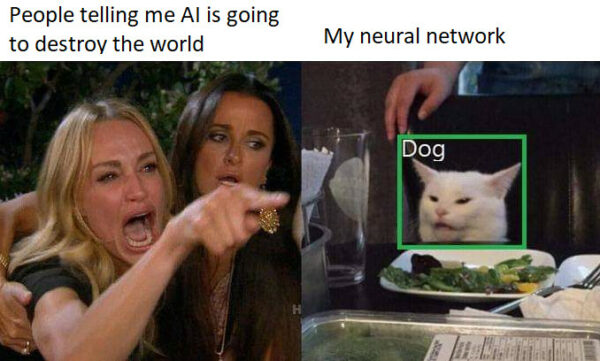
The latest news sounds as conflicted as we are about AI, it comes from The Hague, Lelystad, Amsterdam, Purmerend, and Hoofddorp, among others. If the takeover has started, we’ve also begun to gain our territory back. We learned that we’ve beaten self-scan automation through small persistent sabotage: “Bargain store Action to ditch self-scan checkout after shoplifting increase”.
While on the political front, The Netherlands started implementing the use of AI to create political programs: “Farmers party BBB is using ChatGPT to help write its election program for the upcoming parliamentary election”.
The future could still go either way.
References
| ↥1 | Generative AI uses pattern-matching to create words, images, and sounds in response to prompts, but it can also create video, music, robot actions, code. At the time of writing this part of the text, June 2023, it took the form of ChatGPT, Bing Chat, Bard, Stable Diffusion, Midjourney, DALL·E, Firefly, MusicLM, Gen1, Make-A-Video, etc. |
| ↥2 | ChatGPT answers generated end of May 2023. |